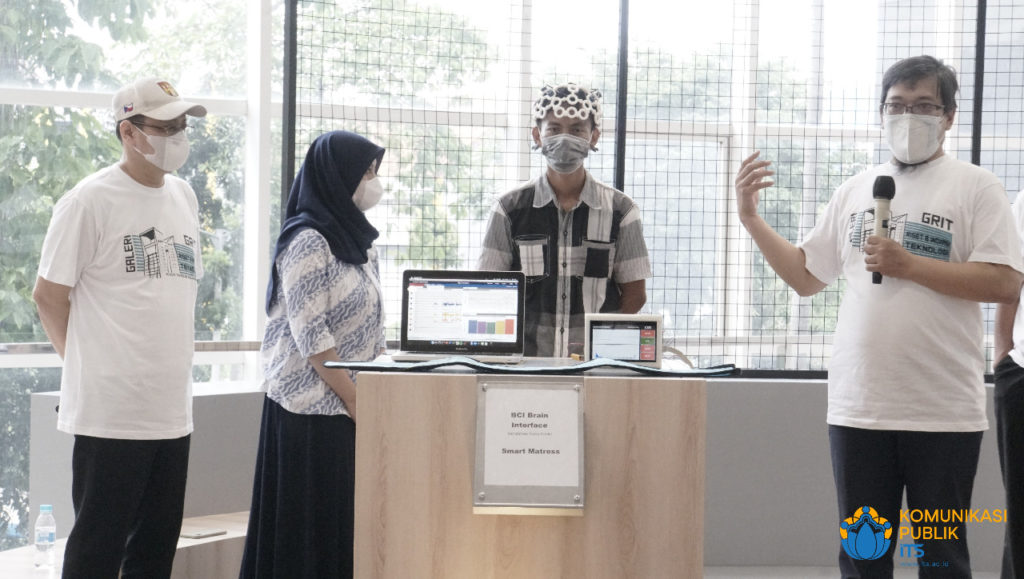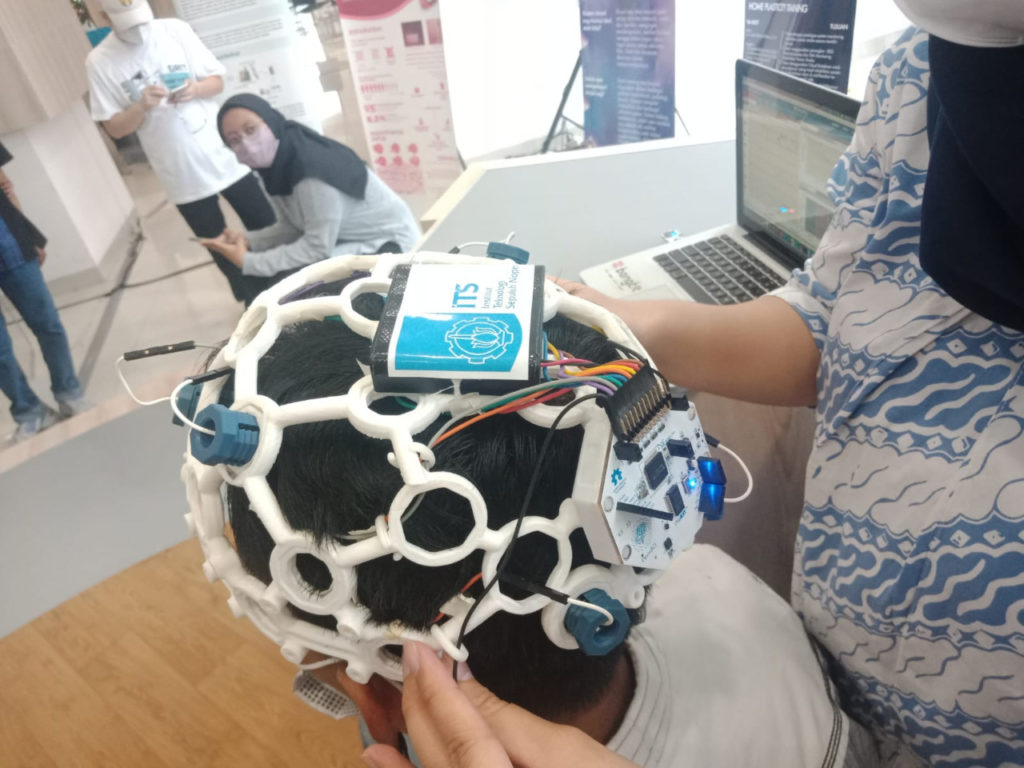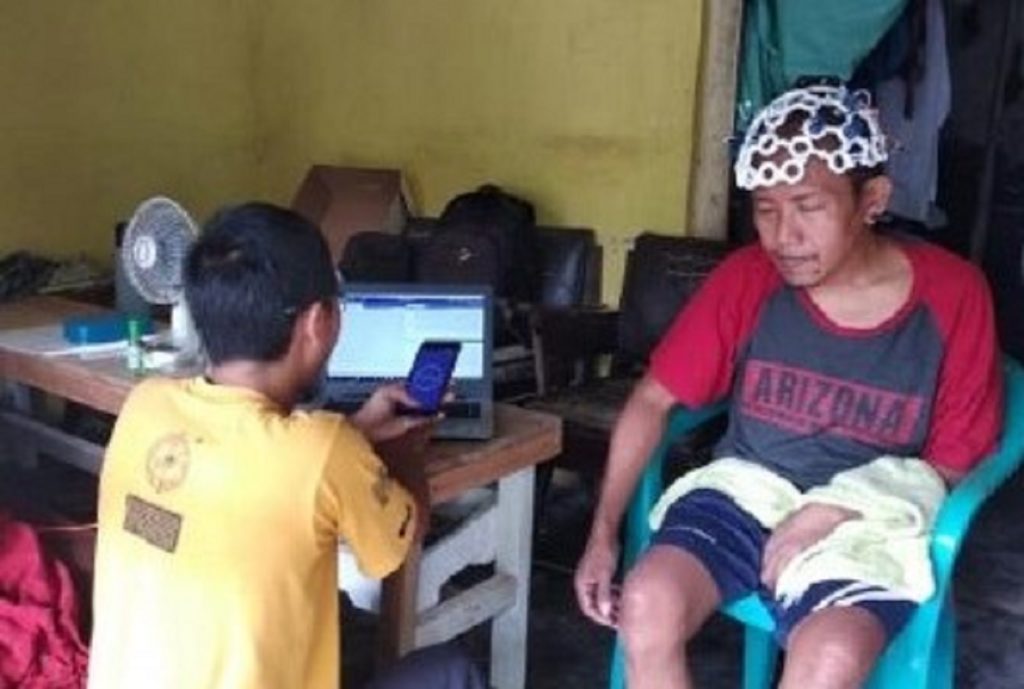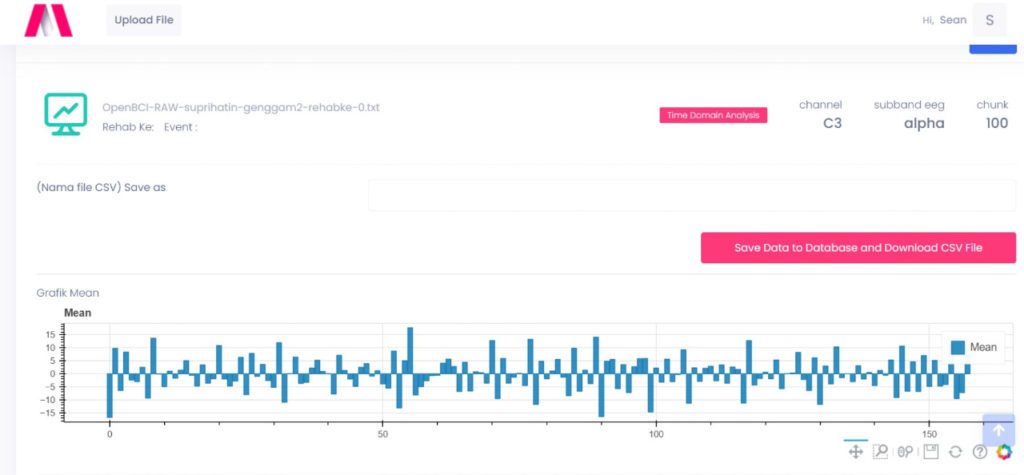Rehabilitation of Stroke Patients Through Monitoring of Brain Electrical Signals

The EEG medical device was designed by the ITS team for the rehabilitation of stroke patients when it was officially launched at the ITS Research Center Building
ITS Campus, ITS News – Currently, the rehabilitation of stroke patients still relies on visual observation methods, so the physical development of post-stroke patients is difficult to monitor due to the lack of accurate observations. Therefore, a team from the Institut Teknologi Sepuluh November (ITS), in collaboration with the Regional General Hospital (RSUD) dr Soetomo and the Airlangga University Hospital (RSUA), innovated a stroke rehabilitation monitoring tool by reviewing the brain’s electrical signals.
The head of the research team, Dr. Adhi Dharma Wibawa ST MT, said that stroke symptoms could damage a person’s motor skills. Regular monitoring of the patient’s motor can improve diagnostic accuracy. This motor ability can be reviewed based on the electrical signal of the human brain or what is known as Electro Encephalography (EEG). “The device can be used by patients independently with the help of health workers remotely, thereby reducing physical activity that can worsen the patient’s condition,” said Adhi.
More deeply, this ITS Computer Engineering Department lecturer explained that the EEG signal would appear every time humans carry out activities. They started from remembering, listening, seeing, even when moving limbs. Therefore, the patient will be asked to do some physical movement by the health worker to analyze the patient’s EEG signal. “Patients only need to use a device on the head, then the electrodes that hit the scalp will capture and amplify the EEG signal,” explained the man from Surabaya.

An EEG device designed by the ITS team that is used in the head of stroke patients to capture brain electrical signals
The electrical signal generated by the brain itself is very small, only on a microvolt scale, so signal amplification and repeated noise filtering are required. Once amplified, the EEG signal will be filtered based on its frequency and grouped into four basic signal types: delta, theta, alpha, and beta.
The signal that has been grouped will be filtered once again to remove the noise that arises. “The tool is very sensitive to noise even the blink of an eye can affect the results,” he said.
Furthermore, said Adhi, the filtered EEG signal will calculate the power value in the signal as a function of frequency. This value is called the Power Spectral Density (PSD), expressed in watts per hertz (W/Hz). Adhi said that under normal conditions, the PSD value in the right brain would increase if there is movement in the left side of the body and vice versa. In stroke patients, abnormal changes can occur. “The PSD value of stroke patients is smaller than that of normal people,” he added.

Testing the EEG tool designed by the ITS team to stroke patients directly
Adhi also reminded that the tool needs to be connected first to a computer device through the available port when using the tool. “This is intended to read the PSD value in real time and convert the results of the EEG recording into txt form which will be stored on the patient’s computer,” said the Deputy Head of the Research Center for Artificial Intelligence (AI) and ITS Health Technology.
The file then needs to be uploaded to the integrated system that has been provided, so the patient needs to register first. This patient database will be reviewed directly by the doctor in charge without meeting in person. “Patients’ progress can be seen based on their PSD values through patient uploaded data,” explained the lecturer, who also teaches the Masters program at the ITS Electrical Engineering Department.

Website display used to monitor patient progress based on the PSD value read on the EEG tool
The research, which has been running since 2018, collaborates with neurologist RSUA Dr. Wardah Rahmatul Islam SpS, rehabilitation expert for stroke patients at RSUD dr Soetomo dr Muhammad Saiful Ardhi Sp S, ITS Masters (S-2) students Monica Pratiwi and Tanti, and ITS students. Doctoral level (S-3) Teguh Sulistyo ST MT and Diah Risqiwati ST MT. “We hope that this tool can soon get permission to be used en masse and bring benefits to the community,” he concluded. (ITS Public Relation)
Reporter: Frecia Elrivia Mardianto
Related News
-
ITS Sends Off 12 Free Mudik Vehicles Ahead of Eid Al-Fitr
The dispatch of 11 bus fleets carrying ITS students for the Free Mudik ITS 2024 ITS Campus, ITS News
January 12, 2022 17:01 -
ITS Lecturer Wins 2024 Female Science Talents Intensive Tracks from Germany
Sri Fatmawati SSi MSc PhD, a lecturer at the Department of Chemistry, ITS, has emerged as the winner of
January 12, 2022 17:01 -
ITS Shares Tips & Tricks on SNBT 2024 Socialization
(from left) Executive Secretary of SNPMB 2024, Bekti Cahyo Hidayanto SSi MKom, Head of the Admissions Subdirectorate at ITS,
January 12, 2022 17:01 -
Supporting Defense in Indonesia, ITS Professor Creates Anti-Radar Material
Professor Dr. Mashuri SSi MSi, while delivering his academic oration on anti-radar materials during the ITS Professorial Inauguration. ITS
January 12, 2022 17:01
